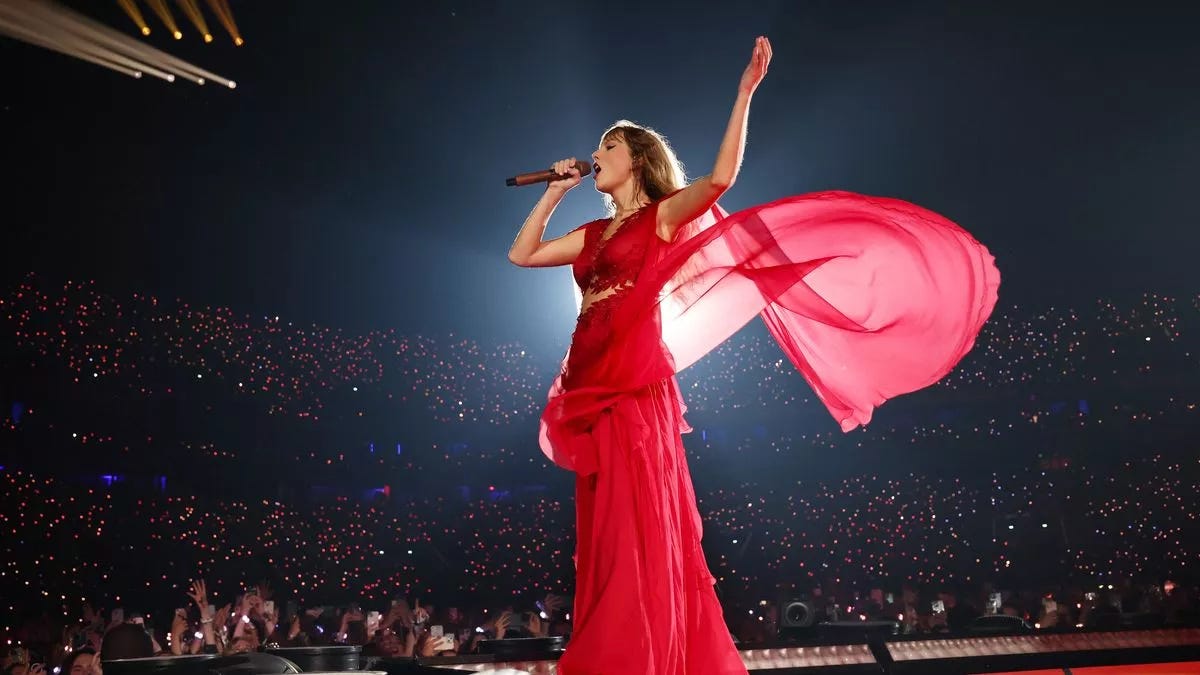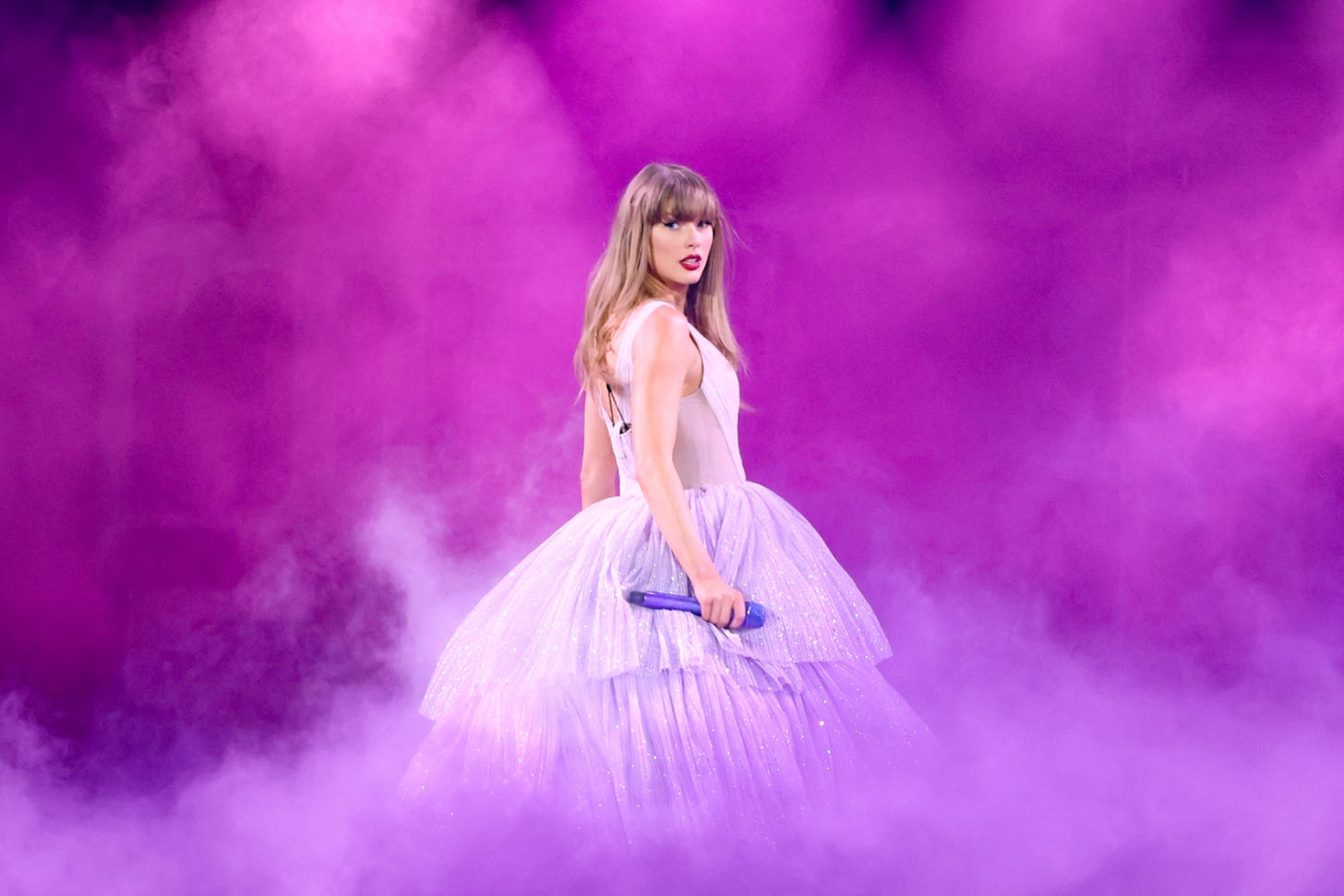Taylor Swift just made $2 billion on one tour.
Yes, billion—with a B.
It’s the most successful tour in history, but that’s not even the full story.
Here’s how she turned music into a global economic engine
The Eras Tour isn’t just a concert series.
It’s an economic phenomenon.
• $2B in ticket sales (the first tour to ever cross that mark).
• $400M in merch sales.
• $261M from the concert film.
• $10B in economic impact across cities.
Let’s break this down.
To put her achievement into perspective:
The second-highest-grossing tour of all time? Coldplay’s Music of the Spheres World Tour—at $1.14B.
Taylor didn’t just break the record. She shattered it.
But the numbers don’t stop there.
Her tour film hit theaters and added another $261M in box office revenue.
Her “Eras Tour Book”? 1M copies sold in a single week.
Taylor isn’t just a performer. She’s an empire.
And it’s not just her. Entire cities are profiting.
• Pittsburgh saw $46M in direct spending during her two shows.
• Denver’s two concerts added $140M to the state’s GDP.
• Hotel occupancy rates hit record highs in nearly every city she visited.
This is Swiftonomics.
So, how did she do it?
Taylor Swift didn’t just create a tour. She created a cultural moment.
Here’s why it worked 👇
First, the Eras Tour was a masterclass in storytelling.
Each segment of the show celebrated a different “era” of her career, creating nostalgia, FOMO, and a sense of participation in history.
Fans weren’t just attending—they were part of the narrative.
Second, she leaned into the fan economy.
Swifties don’t just buy tickets—they buy:
• Custom outfits for shows
• Exclusive merch
• Limited-edition vinyl
Every fan felt like an investor in the experience. And it paid off.
Third, she’s a master of scarcity and exclusivity.
When demand for tickets overwhelmed Ticketmaster, it created chaos—and drove demand higher.
People had to see the show. The rarity of tickets made them even more valuable.
But here’s the deeper story:
Taylor’s tour wasn’t just about music. It became a global economic stimulus package.
Cities planned their tourism strategies around her. Hotels, restaurants, and even local governments felt the ripple effects.
The US Travel Association estimated her tour added $10B to the economy. She’s been credited with reviving local economies post-pandemic.
Who else can do that while singing “All Too Well” for 10 minutes? Of course, not everyone is happy.
Critics argue:
• Ticket prices are too high.
• The fanbase can’t sustain this level of spending.
• Is it even fair for one artist to dominate this much?
But Taylor’s numbers speak for themselves.
What’s next?
Taylor isn’t slowing down.
Her strategy extends beyond music into:
• Film (her Eras Tour movie is just the start).
• Publishing (the tour book’s 1M sales suggest a literary empire).
• And maybe… global brand domination?
The bigger picture
Taylor Swift is proof that music isn’t just art. It’s an economic engine.
From concert halls to local economies, her success is a case study in blending creativity, business, and cultural relevance.
She’s not just breaking records—she’s rewriting the rules.
Love her or hate her, one thing is clear: Taylor Swift has reshaped the music industry and the global economy.
What do you think? Is this just the beginning, or has she hit her peak?
Thanks for reading! Love what you read? Subscribe and never miss an update!






